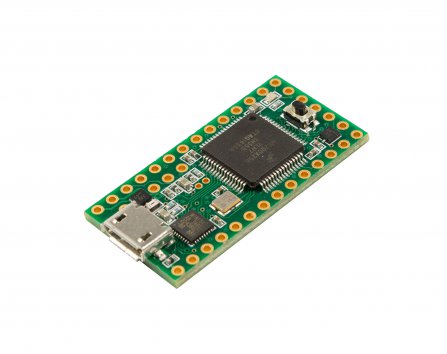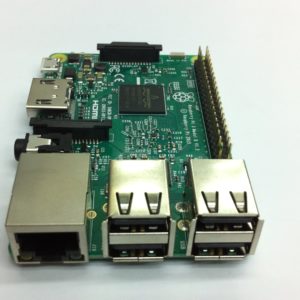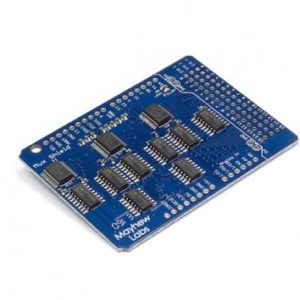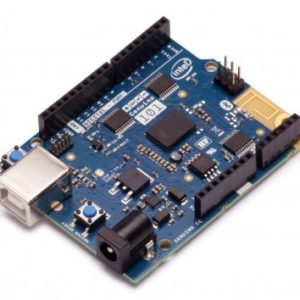Description

Teensy 3.2 The Teensy is a complete USB-based microcontroller development system, in a very small footprint, capable of implementing many types of projects. All programming is done via the USB port. No special programmer is needed, only a standard micro USB cable and a PC or Macintosh with a USB port.
New Feature
Teensy 3.2 has the same size, shape & pinout; is compatible with code written for Teensy 3.0, and is well supported on the Arduino IDE using Teensyduino. Teensy 3.2 adds several new features, due to an upgraded microcontroller. Here are the highlights.
More Memory For Awesome Projects
The RAM has quadrupled, from 16K to 64K. While 16K is plenty for nearly all Arduino libraries, 64K allows for more advanced applications. Icons and graphics for color displays and audio effects requiring delays, like reverb and chorus, will become possible on Teensy 3.2. Flash memory has also doubled, to 256K, and provides double the memory bandwidth.
5 Volt Tolerance on Digital Inputs
Today most new chips use 3.3V signals, but many legacy products output 5 volt digital signals. These can now be directly connected to Teensy 3.1’s digital inputs. All digital pins are 5 volt tolerant on Teensy 3.2. However, the analog-only pins (A10-A14), AREF, Program and Reset are 3.3V only.
Update: Color Change Jan 22, 2014
The color of Teensy 3.2 was changed from black to green on January 22, 2014.
The green material has slightly higher resolution. See this post for details.
12 Bit Analog Output
Teensy 3.2 has a proper analog output. You can always filter PWM, but true analog output responds rapidly. The output is created by the stable reference voltage, so it’s doesn’t vary if your power supply voltage changes slightly.
Simply use analogWrite() on the A14 pin for true analog output.
Two Analog to Digital Converters
With analogRead(), you can measure many signals, but only 1 at a time. Teensy 3.2 has a second ADC, so you can concurrently measure 2 analog signals. For stereo audio or power monitoring, sampling both left and right, or voltage and current at the same moment is very beneficial. Pedvide’s ADC library can be used to access both ADCs.
CAN Bus
Controller Area Network is a communication used in automobiles. A new library to support Teensy 3.2’s CAN controller is planned.
Pinouts
Teensy 3.2 is meant to be a drop-in replacement for Teensy 3.0. Only 1 pin has different functionality. The reset pin was replaced by A14/DAC, which you can use for true analog output, or as another analog input.
Pins 3 and 4 gained CAN bus functions.
Pins 6, 9, 15, and 20-21 can still have SPI chip select capability, but the labels were removed to simplify the pinout card. Currently no libraries use the native chip selects. However, a new SPIFIFO library is in development.
On the back side, 2 pins gained new PWM functionality and 6 pins have new analog input capability. A second I2C port is also added.
Reset Signal
Teensy 3.0 supported both a Program signal, to reboot into bootloader mode, and a traditional Reset signal, for a conventional reboot that restarts your application. The Reset signal can be found on a new test point on the bottom side of Teensy 3.2.
Technical specifications
| Microcontroller | MK20DX256VLH7 |
| Operating Voltage | 3.3V |
| Input Voltage (limit) | 5V |
| Digital I/O Pins | 34 |
| PWM Digital I/O Pins | 12 |
| Analog Input Pins | 21 |
| Analog Output Pins | 1 |
| Flash Memory | 256 KB |
| SRAM | 64 KB |
| EEPROM | 2 |
| Clock Speed | 72 MHz |





Reviews
There are no reviews yet.